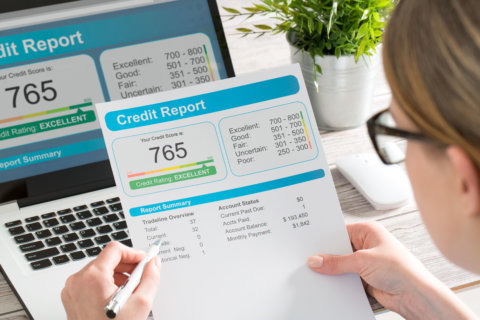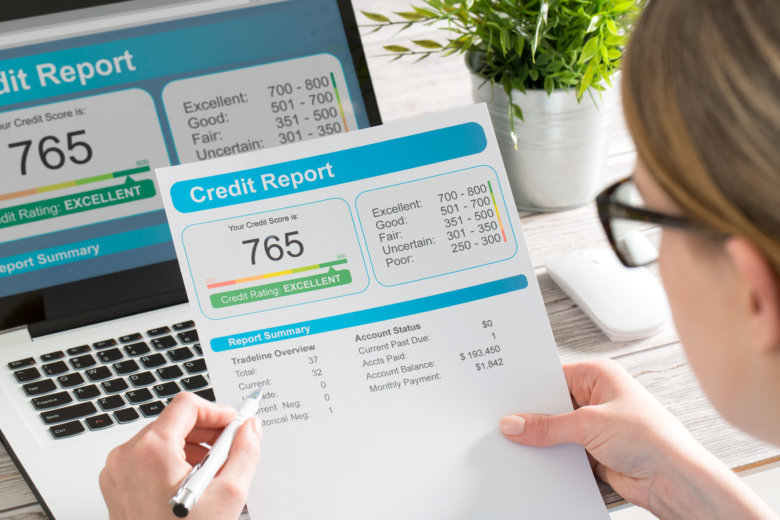
You finally made it! You’ve got a 760 credit score, and that means you’re approaching exceptional in the eyes of FICO.
I’m talking about your score, not you personally. Oh, OK, you’re exceptional, too! Now that you’re feeling good about yourself and your credit, what should you do next?
You can do nothing, of course, if your credit life is all puppies and rainbows. But if there are financial areas of your life that could use a little upgrade, then right now is a good time to make it happen.
Negotiate for Better Terms on Your Credit Cards
If you applied for credit cards when your score was 670, or maybe even 700, then you probably have an annual percentage rate that’s too high. This is easy to solve.
Call your issuer and explain that you’ve worked super hard on your credit and your score is now near the exceptional range. Have you received offers for other credit cards recently? Often, when your score goes up, you enter a new credit category, and that gets the attention of financial institutions.
When you call to ask for a lower APR (and maybe a credit limit increase, too), if the issuer resists, let it know that you’re getting offers for comparable cards with lower APRs.
This is a little like dating. When you’re in demand, everyone wants you. So don’t be afraid to use a little leverage to get top rates.
[Read: Best Rewards Credit Cards.]
Apply for a Better Credit Card
Does your new credit status make a current credit card obsolete? This can happen if you still have a secured card or a card targeting those with fair credit. In some cases, you can ask to be upgraded within the same brand.
For example, maybe you got a Capital One QuicksilverOne Cash Rewards credit card when you had fair credit. Call and ask if you can be upgraded to the Quicksilver Cash Rewards credit card, which is for consumers with excellent credit and offers better rewards.
Or maybe you love to travel and you’ve had your eye on the Chase Sapphire Preferred card for a long time. When you go for elite rewards cards, just make sure you factor in annual fees. If the card is a good fit for you, your rewards will most likely exceed the annual fee.
Refinance Your Mortgage and Reduce Your Monthly Payment
OK, this is a big one. According to FICO, with a score of 639, you’d get a 5.63 percent interest rate. On a $216,000 home with a 30-year fixed mortgage, you’d pay $1,244 per month (minus other monthly payments).
Now look at how much you save with a 760 credit score: Your rate is now 4.04 percent, and your monthly payment is $1,036. That’s a monthly savings of $208. Your annual savings? A whopping $2,496. It would be nice to tuck those savings away in an emergency fund, wouldn’t it?
Your savings, of course, depend on what your score was when you applied for your current mortgage. But run the numbers and see how much you can reduce your monthly payment. When you do your analysis, don’t forget to add the costs of refinancing, which can include application fees, origination fees and other closing costs.
[Read: Cash Back Credit Cards.]
Pay Off Credit Card Debt Without Paying Interest
That $5,000 balance you have on a credit card with a 19 percent APR? No problem.
Now that you and your credit score are deemed exceptional, you can qualify for the top balance transfer credit cards. Right now, the best cards are offering zero percent introductory APRs that last between 12 and 21 months.
Let’s say you get approved for a credit card that has a zero percent introductory APR for 21 months. Let’s also say that the issuer charges a 3 percent balance transfer fee, which will cost $150 ($5,000 x .03).
To pay this off during the intro period, you need to calculate your monthly payment. Don’t freak out about the math. It’s really simple:
Total amount you owe: $5,000 + $150 (transfer fee) = $5,150.
Your monthly payment: $5,150 / 21 = $245.24. So, you pay $245.24 per month, and by the end of 21 months, your debt is paid off. And guess what? As your balance is going down, your credit score is going up even more.
Revisit Your Car Insurance Premiums
It isn’t common knowledge that there’s a connection between your credit score and your insurance rates. WalletHub reported in 2018 that Americans with no credit, on average, pay 67 percent more for car insurance than people who have excellent credit. It varies by state, but that’s a pretty significant difference.
So if you’ve had your current car insurance since your low-credit-score days, now’s the time to place a call to your agent and ask to be reconsidered for lower premiums.
[Read: Credit Cards with High Credit Limits.]
How to Get a 760 Credit Score
If you’re experiencing score envy, cheer up. You, too, can have an exceptional credit score.
Here are the basics:
— Pay all your bills on time. Payment history is 35 percent of your FICO score.
— Keep low (really low) utilization ratios on your credit cards. Your credit utilization is 30 percent of your score. If you want a score in the stratosphere, keep your ratio under 10 percent.
— Have a budget and track your spending so you don’t overspend and get into debt. It’s essential to do both.
Practice the basics, and then don’t obsess about your score. You don’t need to check it every day. Monitor it monthly on your credit card statement, if your issuer supplies a score. Or use one of the free credit score websites or credit score apps to track your monthly progress. Before you know it, your score will jump into the vaunted exceptional credit score range.
More from U.S. News
What Is an Excellent Credit Score?
Best Apps for Your Credit Score
Fastest Ways to Improve Your Credit Score
5 Things to Consider Doing When Your Credit Score Reaches 760 originally appeared on usnews.com








